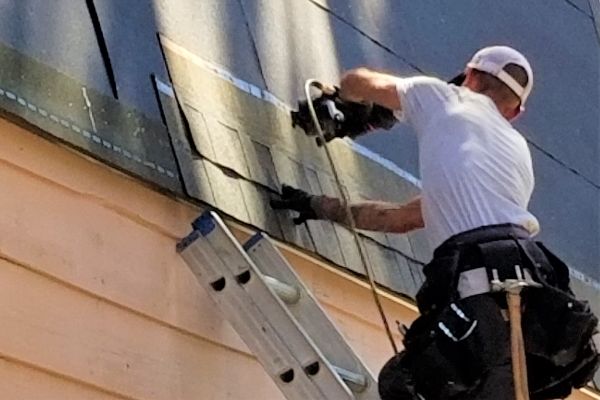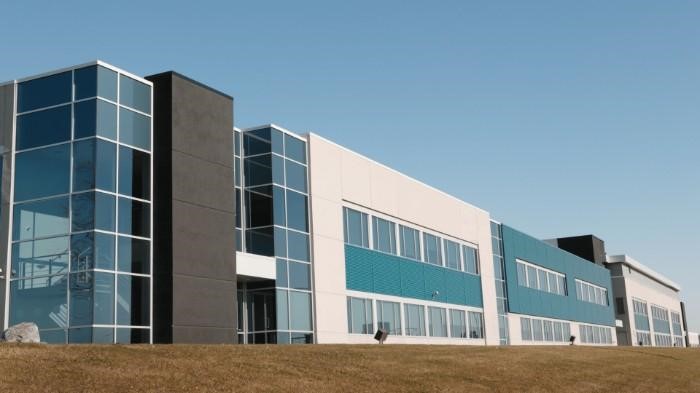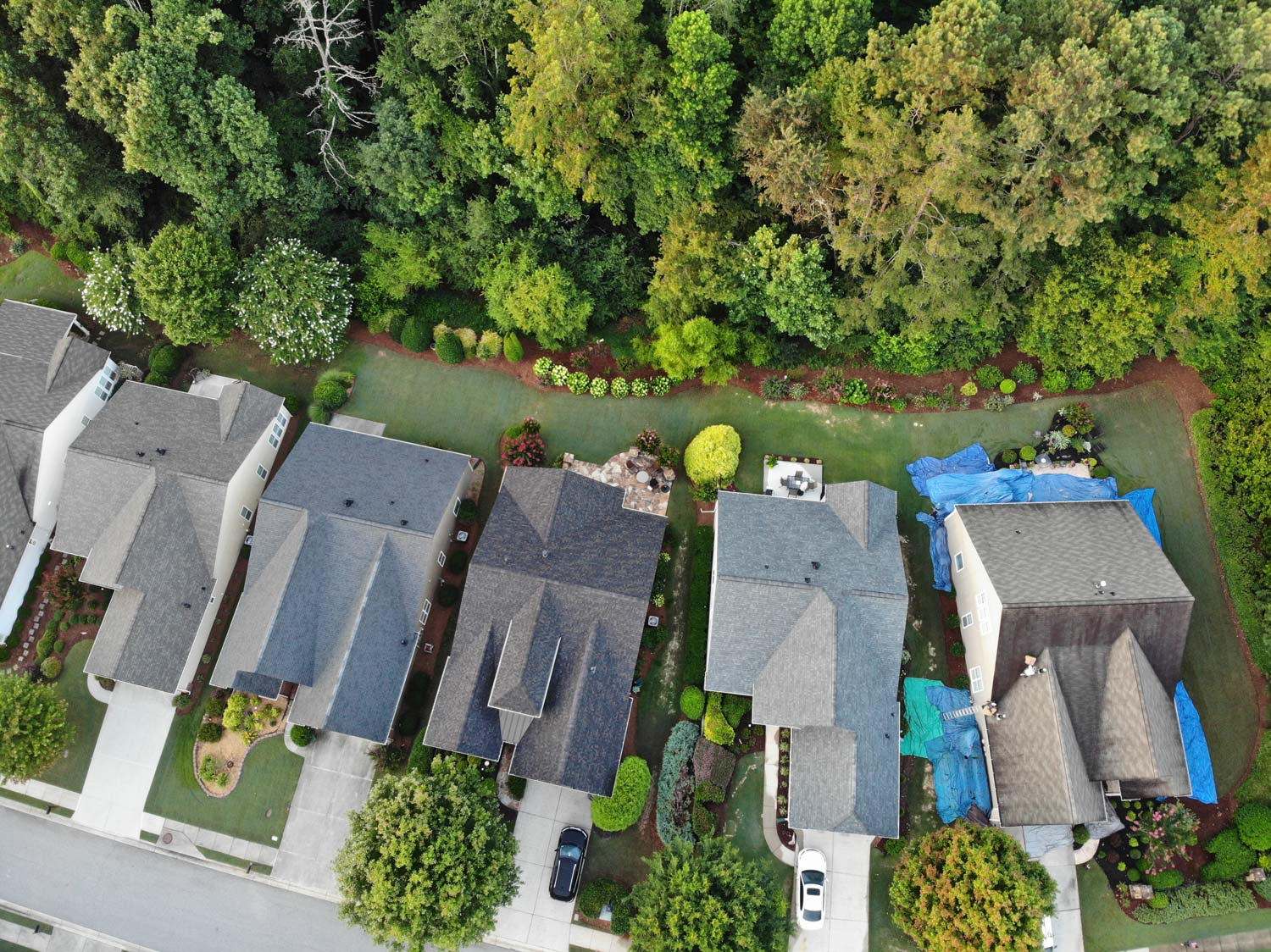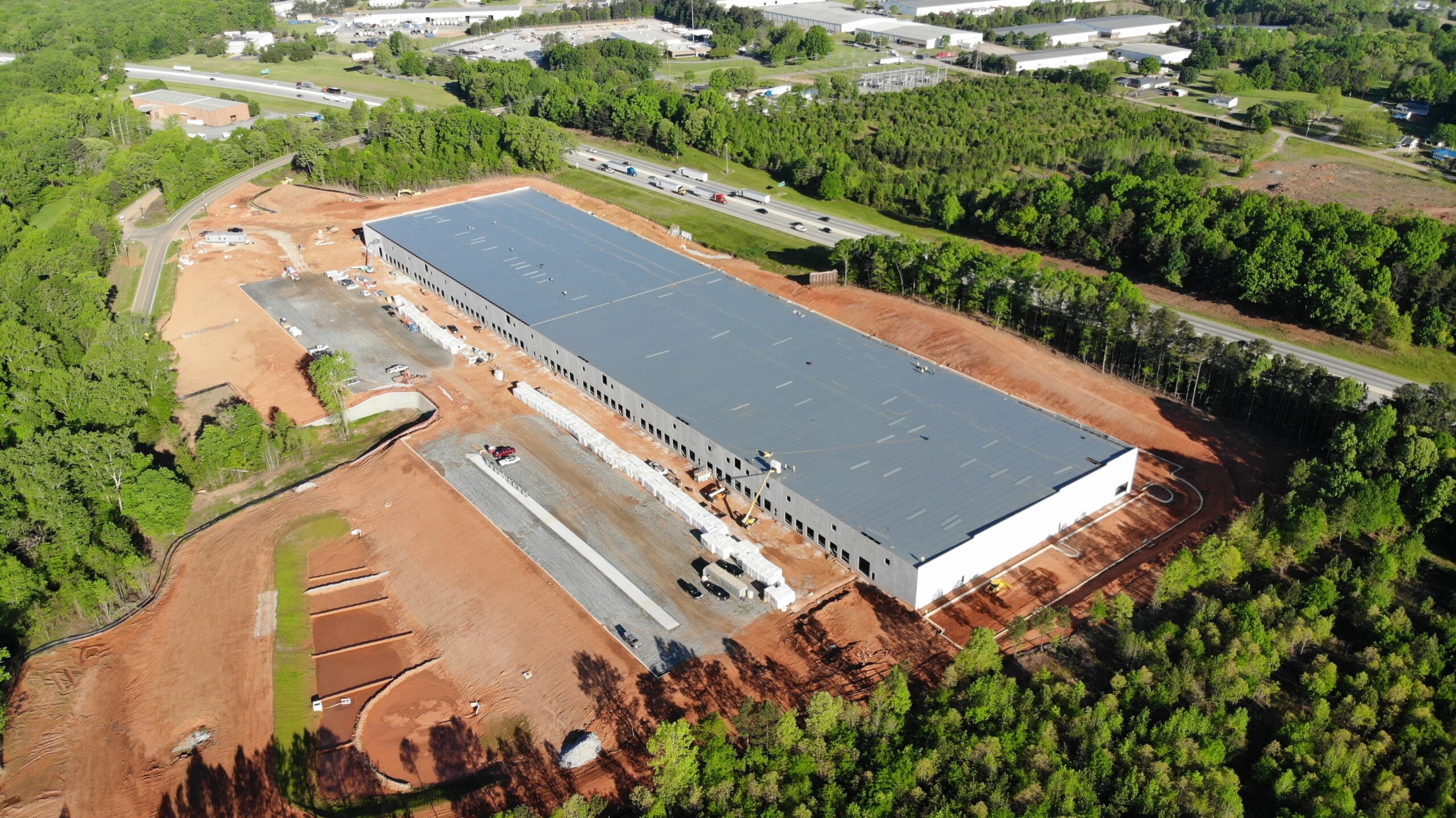Understanding Roof Insurance Claims: Steps to Take After Storm Damage
Experiencing storm damage to your roof can be stressful, but understanding the process of filing insurance claims and working with adjusters can help ease the burden. At URC Roofing, we're here to guide you through each step to ensure your roof is repaired promptly and efficiently. Here’s a comprehensive guide on what to do after storm damage and how to navigate the roof insurance claims process.
1. Assess the Damage
After a storm, carefully assess your roof for any visible damage. Look for:
- Missing or Damaged Shingles: Check for shingles that are torn, cracked, or missing altogether.
- Leaks: Look for signs of water stains on ceilings or walls, which indicate roof leaks.
- Dents or Punctures: Check metal roofs for dents or punctures caused by hail or debris.
- Gutter Damage: Inspect gutters and downspouts for dents, clogs, or detachment.
2. Document the Damage
Document the damage thoroughly with photographs or videos. Make sure to:
- Take Close-Up Photos: Capture clear images of damaged areas, including close-ups of individual shingles or sections of the roof.
- Capture the Entire Roof: Take wide-angle shots to show the overall extent of the damage.
- Include Interior Damage: Document any interior damage caused by roof leaks.
3. Review Your Insurance Policy
Review your homeowner’s insurance policy to understand your coverage, including:
- Coverage Limits: Know the maximum amount your policy will pay for roof repairs or replacement.
- Deductible: Understand your deductible amount, which is the portion of the repair costs you are responsible for paying out of pocket.
- Coverage Details: Check for specific coverage exclusions or limitations related to storm damage.
4. Contact Your Insurance Company
Contact your insurance company as soon as possible to report the damage. Provide:
- Date and Type of Damage: Describe when and how the damage occurred (e.g., hailstorm, windstorm).
- Documentation: Submit your photos or videos of the damage for review.
- Policy Information: Have your policy number and contact information ready for reference.
5. Schedule an Inspection
Your insurance company may schedule an inspection with an adjuster to assess the damage. Be prepared to:
- Meet with the Adjuster: Accompany the adjuster during the inspection to point out specific areas of damage.
- Provide Documentation: Show the adjuster your documentation of the damage.
- Ask Questions: Seek clarification on any aspects of the inspection or coverage details.
6. Receive the Claim Estimate
After the inspection, the adjuster will provide a claim estimate detailing:
- Repair or Replacement Costs: The estimated cost to repair or replace the damaged roof.
- Coverage Determination: Whether the damage is covered under your policy and the amount the insurance company will pay.
7. Select a Qualified Roofing Contractor
Choose a reputable roofing contractor like URC Roofing to perform the repairs. Consider:
- Experience and Credentials: Ensure the contractor is licensed, insured, and experienced in storm damage repairs.
- References and Reviews: Check customer reviews and references to verify their reputation.
- Written Estimates: Obtain written estimates for the repair costs and scope of work.
8. Coordinate with Your Insurance Company
Work closely with your roofing contractor and insurance company to:
- Coordinate Repairs: Provide the claim estimate and any additional documentation required by your insurer.
- Authorize Repairs: Obtain approval from your insurer before proceeding with repairs to ensure coverage.
9. Complete the Repairs
Once approved, schedule the repairs with your roofing contractor. During repairs:
- Monitor Progress: Stay informed about the repair timeline and ensure the work meets your satisfaction.
- Final Inspection: Conduct a final inspection with your contractor to ensure the repairs are completed correctly.
10. Submit Documentation and Finalize Claims
Submit any final invoices and documentation to your insurance company for reimbursement. Keep records of:
- Receipts and Invoices: Provide copies of all invoices and receipts related to the repairs.
- Insurance Correspondence: Keep copies of all communication with your insurance company regarding the claim.
11. Maintain Roof Maintenance
After repairs, maintain regular roof maintenance to prevent future damage and ensure your roof remains in good condition. Consider scheduling annual inspections and addressing any minor repairs promptly.
Conclusion
Navigating roof insurance claims after storm damage can be complex, but with proper preparation and guidance, you can streamline the process and ensure your roof is restored quickly and effectively. At URC Roofing, we’re committed to assisting homeowners throughout the insurance claims process and providing expert roof repair services. If your roof has been damaged in a storm, contact us today for professional assistance and peace of mind.
How Regular Roof Inspections Can Save You Money in the Long Run
Imagine a scenario where a little negligence in roof maintenance turns into a costly disaster. This is where the significance of regular roof inspections shines through, offering not just peace of mind but tangible financial benefits in the long haul. Let's delve into how prioritizing routine roof check-ups can be a smart investment for your property's future.
The Importance of Regular Roof Inspections
Your roof, though often overlooked, plays a critical role in protecting your home from the elements. Regular roof inspections serve as the first line of defense against leaks, structural damage, and other issues that can escalate if left unchecked. By scheduling routine inspections, you ensure that any underlying problems are caught early, preventing them from snowballing into major headaches.
Moreover, timely roof inspections can help extend the lifespan of your roof. Detecting and fixing minor damages promptly can prevent the need for premature roof replacement, saving you a significant amount of money in the long run. Investing in regular check-ups is, therefore, a proactive strategy to enhance the longevity of your roof and maximize your property's value.
Beyond financial considerations, roof inspections also contribute to the safety and well-being of your household. A well-maintained roof is less likely to pose risks such as mold growth, water infiltration, or structural compromise. By prioritizing regular inspections, you create a secure environment for your loved ones and protect your property from potential hazards.
Spotting Roof Issues Early
One of the primary benefits of regular roof inspections is the ability to spot issues at their nascent stage. Minor leaks, damaged shingles, or clogged gutters are problems that may seem insignificant initially but can lead to extensive damage if ignored. By engaging in proactive inspection practices, you empower yourself to identify these issues early on and address them promptly.
Early detection through roof inspections not only prevents the escalation of problems but also translates to cost savings. Repairing a small leak is undeniably more economical than dealing with water damage restoration or extensive roof repairs due to neglect. By staying vigilant and catching issues in their infancy, you mitigate financial strain and preserve the integrity of your roof.
Furthermore, early intervention facilitated by roof inspections helps maintain the energy efficiency of your home. A compromised roof with hidden issues can lead to energy wastage and higher utility bills. By proactively identifying and rectifying issues, you ensure that your roof functions optimally, contributing to a more environmentally friendly and cost-effective household.
In essence, the adage 'a stitch in time saves nine' perfectly encapsulates the essence of early roof inspections. By addressing problems when they are minor, you not only save money but also preserve the comfort, safety, and longevity of your home.
Cost Savings Through Preventive Measures
Cost savings are a compelling incentive for prioritizing preventive roof inspections. By investing a modest amount in regular check-ups, you can potentially avoid significant expenses related to major roof repairs or replacements. Preventive maintenance not only safeguards your financial resources but also minimizes the inconvenience and stress of dealing with sudden roofing emergencies.
Additionally, preventive roof inspections enable you to plan and budget effectively for any necessary repairs or maintenance. By staying proactive and addressing issues during routine inspections, you have the advantage of foresight, allowing you to allocate resources strategically and avoid sudden financial strains associated with unforeseen roofing problems.
Embracing preventive measures through regular roof inspections is a testament to wise financial management. It is a proactive investment in the longevity of your property and the sustainability of your finances, offering you the dual benefits of peace of mind and economic security.
In essence, staying proactive with roof inspections is akin to safeguarding your financial well-being. By addressing minor issues promptly and embracing preventive measures, you not only maintain the structural integrity of your roof but also shield your wallet from potentially hefty repair or replacement costs down the line.
Common Commercial Roofing Problems: What to Look Out For
As a property owner or manager, ensuring the integrity of your commercial roof is essential to protecting your investment and maintaining a safe environment for occupants. However, even with regular maintenance, roofing issues can arise over time, potentially leading to costly repairs or replacements if left unaddressed. In this blog post, we'll explore some of the most common commercial roofing problems that property owners should be aware of, brought to you by Universal Roofing and Construction.
- Substandard Installation:
One of the primary causes of roofing problems is substandard installation. Improper installation techniques or the use of inferior materials can compromise the structural integrity of the roof, leading to premature deterioration and susceptibility to damage. - Pooling Water:
Pooling water on the roof's surface is a common issue, particularly in flat or low-slope roofing systems. This stagnant water can accelerate roof deterioration, leading to leaks, mold growth, and structural damage if not properly addressed. - Leaks:
Leaks are perhaps the most obvious sign of roofing problems and can result from a variety of issues, including damaged flashing, punctures, or deteriorated roofing materials. Prompt identification and repair of leaks are crucial to preventing water damage to the interior of the building. - Flashing Issues:
Flashing, which is used to seal joints and transitions on the roof, is prone to damage and deterioration over time. Improperly installed or damaged flashing can allow water infiltration, leading to leaks and moisture-related issues. - Blow-offs and Tenting:
High winds and severe weather events can cause roofing materials to become dislodged or uplifted, resulting in blow-offs or tenting. This not only compromises the roof's waterproofing capabilities but also poses a safety risk to occupants and neighboring properties. - Surface Erosion:
Surface erosion, often caused by exposure to UV rays, weathering, and foot traffic, can weaken the protective layer of roofing materials, leaving the roof vulnerable to damage from the elements. - Punctures:
Punctures in the roofing membrane can occur due to various factors, including foot traffic, falling debris, or the use of sharp objects during maintenance activities. These punctures can compromise the roof's waterproofing abilities and lead to leaks if left untreated. - Shrinkage:
Roofing materials such as single-ply membranes are susceptible to shrinkage over time, particularly in areas with fluctuating temperatures. Shrinkage can cause seams to pull apart, leading to leaks and other moisture-related issues.
NRCA Applauds EPA's Final Denial to Classify PVC as a Hazardous Material
In a recent decision, the Environmental Protection Agency (EPA) made a significant ruling regarding the classification of Polyvinyl Chloride (PVC) as a hazardous material under the Resource Conservation and Recovery Act (RCRA). On April 26, the EPA announced its final denial of the Center for Biological Diversity’s petition, a move applauded by industry stakeholders, including the National Roofing Contractors Association (NRCA).
Background: PVC, commonly used in a variety of industries including construction, has been the subject of debate regarding its environmental impact. The Center for Biological Diversity petitioned the EPA to classify discarded PVC as hazardous waste, citing concerns about its potential harm to human health and the environment if improperly managed.
EPA's Decision: Following thorough review and consideration, the EPA issued a final denial of the petition. In its decision, the EPA emphasized that the petition failed to provide substantial evidence demonstrating that discarded PVC poses a significant hazard when improperly treated, stored, transported, or disposed of. This ruling highlights the importance of evidence-based decision-making in environmental policy.
NRCA's Role: The NRCA played a crucial role in providing data and insights to support the EPA's decision. As a critical coalition member, the NRCA contributed valuable information to refute the claims made by the Center for Biological Diversity. Additionally, the NRCA submitted additional comments during the feedback period, further strengthening the case against classifying PVC as hazardous waste.
Implications: The EPA's final denial is a significant victory for industries that rely on PVC, including the roofing sector. By maintaining the current classification of PVC, businesses can continue to utilize this versatile material without facing additional regulatory burdens. Moreover, the decision underscores the importance of engaging in collaborative efforts to ensure sound environmental policies that balance both sustainability and practicality.
Moving Forward: While the EPA's decision represents a positive outcome for stakeholders, ongoing efforts to promote environmental stewardship remain essential. Industry organizations like the NRCA will continue to advocate for responsible waste management practices and the use of sustainable materials in construction projects. By working together, we can uphold environmental standards while supporting the growth and innovation of our industries.
DIY Roof Replacement vs. Professional Roofing Replacement: Making an Informed Decision
In the vast landscape of home improvement projects, few endeavors rival the importance of roof replacement. Whether spurred by the aging of your current roof, damage from severe weather, or a desire to enhance your property's aesthetics and functionality, the decision to replace your roof is a significant one. At Universal Roofing and Construction, we recognize the gravity of this choice and are committed to equipping homeowners with the knowledge necessary to make well-informed decisions. In this comprehensive guide, we'll delve deeply into the nuances of DIY roof replacement versus the engagement of professional roofing contractors, highlighting the advantages, challenges, and potential pitfalls of each approach.
1. DIY Roof Replacement:
Advantages:
Cost Savings: One of the most appealing aspects of DIY roof replacement is the potential for significant cost savings. By eliminating labor costs typically associated with hiring professional contractors, homeowners can keep their overall expenses lower.
Sense of Accomplishment: Undertaking a DIY roof replacement project can be immensely gratifying. It provides homeowners with a sense of accomplishment and pride in knowing they've taken a hands-on approach to improve their home.
Challenges:
Skill and Expertise: Roof replacement is a highly technical endeavor that demands specialized knowledge and skills. Without the requisite experience, homeowners may struggle to execute the project correctly, leading to suboptimal results and potential safety hazards.
Safety Concerns: Working at heights inherently poses risks, and DIY roof replacement amplifies these dangers. Without proper safety precautions and equipment, homeowners put themselves at significant risk of accidents and injuries.
Quality Control: Ensuring the quality and longevity of a DIY roof replacement can be challenging. Inadequate installation techniques or improper material selection may compromise the integrity of the roof, leaving it susceptible to leaks, structural damage, and costly repairs down the line.
2. Professional Roofing Replacement:
Advantages:
Expertise and Experience: Professional roofing contractors bring a wealth of experience and expertise to the table. Trained in the latest techniques and industry best practices, they possess the skills necessary to execute flawless roof replacements with precision and efficiency.
Quality Materials: Reputable roofing companies like Universal Roofing and Construction have access to high-quality materials and industry-leading products. By partnering with professionals, homeowners can rest assured that their new roof will be constructed using top-tier materials that enhance durability and longevity.
Warranty Protection: Professional roof replacement often comes with warranty coverage, providing homeowners with peace of mind and protection against unforeseen issues. In the event of material defects or installation errors, reputable contractors typically offer warranties that cover repairs or replacements at no additional cost.
Challenges:
Initial Cost: While the upfront cost of professional roof replacement may be higher than DIY alternatives, it's crucial to consider the long-term value and return on investment. Investing in quality craftsmanship and premium materials can extend the lifespan of the roof, ultimately saving homeowners money on repairs and replacements over time.
Finding the Right Contractor: Selecting the right roofing contractor is paramount to the success of your project. Conducting thorough research, reading reviews, and requesting multiple quotes are essential steps in ensuring you choose a reputable and trustworthy company with a proven track record of excellence.
3. Insurance Coverage Considerations:
For homeowners facing the prospect of roof replacement due to damage from severe weather events or unforeseen circumstances, insurance coverage can significantly impact the decision-making process. In many cases, homeowners' insurance policies may cover the cost of roof replacement, provided the damage is deemed eligible under the terms of the policy.
Advantages:
Financial Relief: Insurance coverage can provide much-needed financial relief for homeowners facing the burden of roof replacement costs. Depending on the extent of the damage and the terms of the policy, insurance may cover all or a portion of the expenses associated with roof replacement, reducing the out-of-pocket costs for the homeowner.
Access to Professional Services: Insurance coverage often requires homeowners to work with licensed and insured roofing contractors. This ensures that the roof replacement is conducted by skilled professionals who adhere to industry standards and best practices, ultimately resulting in a high-quality. outcome.
Challenges:
Navigating Insurance Claims: Navigating the insurance claims process can be complex and time-consuming. Homeowners may encounter challenges in documenting the extent of the damage, communicating with insurance adjusters, and understanding the intricacies of their policy coverage.
Policy Limitations and Deductibles: Insurance policies may impose limitations on coverage amounts or require homeowners to pay a deductible before benefits kick in. It's essential for homeowners to review their policy carefully and understand any limitations or deductibles that may apply to their roof replacement claim.
Quality Assurance: While insurance coverage may provide financial assistance for roof replacement, homeowners should remain vigilant about the quality of the workmanship and materials used. Partnering with a reputable roofing contractor like Universal Roofing and Construction ensures that the roof replacement meets industry standards and delivers lasting performance.
Conclusion:
When it comes to the choice between DIY roof replacement and hiring professional roofing contractors, there's no one-size-fits-all solution. While DIY projects may offer cost savings and a sense of personal accomplishment, they also present significant challenges and risks. Conversely, professional roof replacement provides expertise, quality craftsmanship, and peace of mind.
At Universal Roofing and Construction, we're dedicated to empowering homeowners with the information and resources needed to make informed decisions about their roofing needs. Whether you opt for a DIY approach or enlist the assistance of our skilled professionals, rest assured that we're here to support you every step of the way. Contact us today to learn more about our comprehensive roofing services and discover why we're the trusted choice for homeowners across the region.
Unveiling the Future of Commercial Roofing: In-depth Insights into 2024 Trends
In the intricate world of commercial roofing, every advancement counts. As we usher in 2024, the industry is experiencing a profound transformation, driven by groundbreaking materials, state-of-the-art technologies, and an unwavering commitment to sustainability. At Universal Roofing and Construction, we're not just witnessing these shifts – we're pioneering them, dedicated to delivering solutions that redefine industry standards. Let's embark on a comprehensive exploration of the upcoming trends shaping the commercial roofing landscape:
1. Durability Reigns Supreme:
The era of prioritizing cost over quality is fading into obscurity. In 2024, durability takes center stage as businesses seek roofing solutions that stand the test of time. While these materials may not always come with a bargain price tag, their unparalleled resilience promises extended lifespans and diminished maintenance costs. Engineered to withstand the harshest weather conditions and environmental pressures, they ensure that commercial properties remain safeguarded year after year.
2. Technological Marvels Enhance Efficiency:
Technology continues to revolutionize every aspect of the commercial roofing sector, elevating efficiency to unprecedented heights. From cutting-edge tools to advanced techniques, the landscape of inspections and repairs is undergoing a profound transformation. Picture drones conducting meticulous aerial surveys and AI-driven analytics enabling predictive maintenance – these innovations empower roofing professionals to deliver unparalleled service while minimizing disruptions to business operations.
3. Embracing Sustainable Solutions:
Sustainability isn't just a buzzword – it's a driving force behind commercial roofing trends. Green roofing systems, integrating vegetation and eco-friendly materials, are rapidly gaining traction as businesses prioritize environmental stewardship. Beyond reducing carbon footprints and enhancing energy efficiency, these systems offer aesthetic allure and insulation benefits. At Universal Roofing and Construction, we're committed to promoting eco-conscious solutions that resonate with the evolving ethos of modern businesses.
4. Evolution of Materials and Coatings:
The evolution of commercial roofing materials and coatings is relentless, with manufacturers pushing the boundaries of innovation. Brace yourself for a wave of new and improved products tailored to specific climates and building requirements. Synthetic roofs, for instance, have undergone a remarkable metamorphosis, boasting lighter weights, fireproof properties, and unparalleled impact resistance. Moreover,
these materials embrace recyclability, underscoring a burgeoning focus on sustainability within the industry.
5. Emergence of Silicone Roof Coatings:
Silicone roof coatings are emerging as a transformative force in commercial roofing. These coatings can be seamlessly applied over existing roofs, adeptly filling cracks and gaps while extending the lifespan of the underlying roof system. What's more, silicone roofs boast light-colored surfaces, minimizing heat absorption and augmenting energy efficiency. Universal Roofing and Construction recognizes the intrinsic value of silicone coatings in preserving and enhancing the performance of commercial roofs.
6. Modernization of Metal Roofing:
Metal roofing, a timeless classic in the realm of commercial properties, continues to undergo a renaissance. Today's metal roofs aren't just aesthetically pleasing – they're also remarkably energy-efficient, offering exemplary thermal retention properties. With an array of design options available, from traditional asphalt shingle mimics to clay tile replicas, metal roofing stands as a versatile and enduring choice for businesses. Additionally, advancements in metal roof coatings mitigate corrosion, ensuring longevity and visual appeal.
In summation, the future of commercial roofing is defined by innovation, sustainability, and heightened performance standards. As Universal Roofing and Construction spearheads the charge in delivering cutting-edge solutions, businesses can rest assured that their properties are entrusted to capable hands. With a steadfast commitment to staying abreast of emerging trends and an unwavering dedication to excellence, we're poised to shape the skyline of tomorrow, one roof at a time.






